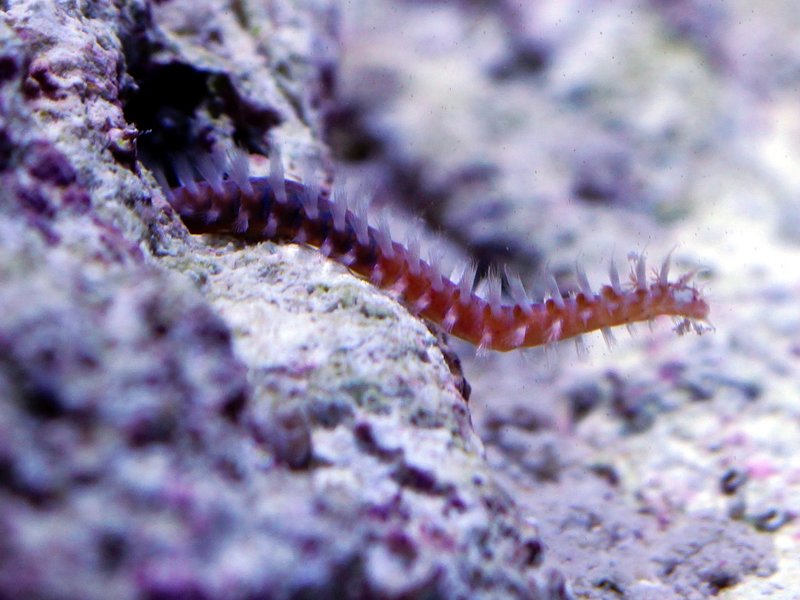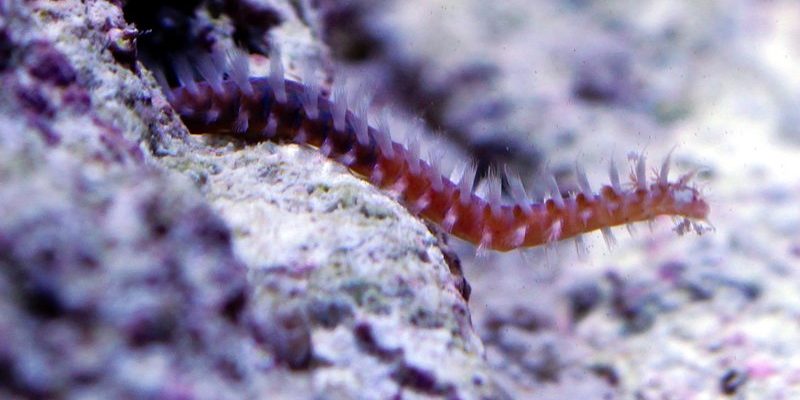
Bristle worms belong to a group of segmented worms known as polychaetes. They’re often beneficial to your aquarium, acting as scavengers and helping to break down organic matter. However, when they proliferate excessively, they can become a nuisance. So, how do they get in, and what does it mean for your aquatic environment? Here’s the thing: bristle worms can sneak into your tank in several unexpected ways. Let me explain.
Common Ways Bristle Worms Enter Aquariums
Bristle worms are opportunistic little invaders. They can hitch a ride into your aquarium through a few common channels:
- Live Rock: Many aquarists use live rock as the foundation of their tanks. This rock often comes with all sorts of critters, including bristle worms. They can ride along, make themselves at home, and replicate quickly.
- Sand and Substrate: Some types of sand or substrate might also contain bristle worm eggs or larvae. If you’re using unprocessed, natural sand, there’s a chance it carries these unwelcome guests.
- Infected Attaching Organisms: Sometimes, corals or other live organisms that you introduce to your tank can carry bristle worms or their eggs. Checking new additions is an essential part of aquarist etiquette.
It’s important to keep these potential pathways in mind. Every time you add something new to your aquarium, you might be letting in a few extra guests!
Identifying Bristle Worms in Your Tank
So, how do you know if you’ve got bristle worms in your tank? These worms often come in a range of colors, from brown to green, and can grow quite long—up to several inches in some cases. They have a distinct appearance that can be a little alarming at first. Here’s what to look for:
- Segmented Body: Bristle worms have long, segmented bodies. Each segment can sometimes be seen dividing with short bristles or hairs protruding from their sides.
- Movement: You’ll notice them wriggling in the sand or darting in and out of rock crevices, especially at night when they are more active.
- Behavior: They often appear when food is present in the tank, so if you see them scurrying around during feeding time, it’s a good sign they are part of your clean-up crew!
Identifying bristle worms is key. Many aquarists worry unnecessarily about these creatures. Truthfully, as long as you maintain a balanced environment, a few bristle worms won’t cause any harm.
Benefits of Bristle Worms
You might be wondering, “Why should I care about these little guys if they can invade my tank?” Well, here’s the highlight: brittle worms actually serve several important roles. Here’s why they can be good to have around:
- Scavengers: Bristle worms feed on decaying matter, uneaten food, and detritus. They help keep your tank clean by breaking down organic waste, which is crucial for a healthy ecosystem.
- Food Source: Many fish and other marine creatures will happily snack on bristle worms, providing a natural food source for your tank inhabitants.
- Habitat Improvement: When they dig through the substrate, they help aerate it, promoting a healthier environment for other critters living in the sand.
In moderation, bristle worms are like the unsung heroes of your aquarium. They contribute to the tank’s health, so it’s essential to recognize their value.
When Bristle Worms Become a Problem
Despite their benefits, you might find that bristle worms can sometimes take over your aquarium. So when does this become a problem? Too many bristle worms can throw off the balance of your tank. Here are some signs that you might need to take action:
- Population Boom: If you’re spotting a significant number of bristle worms—way more than you’d expect—it’s time to evaluate your tank conditions. They thrive in *overfeeding* and poor water quality.
- Harm to Corals: If bristle worms are attacking and feeding on your corals, that’s a clear sign they’ve become too numerous. Healthy corals should be your priority.
- General Imbalance: An overabundance of bristle worms might indicate that your clean-up crew is out of balance, which can lead to water quality issues.
If you notice these problems, it’s worth addressing the underlying causes to restore your aquarium’s health.
Managing Bristle Worm Populations
So, if you find your bristle worm population has exploded, what can you do? Luckily, there are various ways to manage them without resorting to harsh chemicals or drastic measures.
- Adjust Feeding Habits: First off, take a good look at how much you’re feeding your fish. Overfeeding can lead to excess waste, which in turn attracts more bristle worms. Cut back a bit, and see if the population stabilizes.
- Add Natural Predators: You can introduce fish or invertebrates that will help keep bristle worm numbers in check. Certain wrasses and predatory invertebrates love snacking on them.
- Manual Removal: If you spot a few adults, you can remove them by hand (gently!) during tank maintenance. Just be careful of the bristles—those can sting!
Managing bristle worms is all about balance. They can be beneficial, but when they cross that line, you need to take action.
Preventing Future Infestations
To avoid any unexpected bristle worm invasions in the future, prevention is key. Here are some straightforward tips to keep your aquarium as free of unwanted guests as possible:
- Quarantine New Additions: Always quarantine new fish, corals, or live rock for a period before introducing them to your main tank. This gives you a chance to spot any pests or issues.
- Use Clean Substrate: When adding to your tank, opt for pre-treated or sterilized sand. This can help prevent any unwanted hitchhikers.
- Maintain Cleanliness: Regularly clean your tank. Remove detritus and uneaten food, and keep your water parameters in check to discourage large populations of bristle worms and other pests.
Preventing bristle worm infestations is all about vigilance and good practices. Your aquarium will thank you for it!
Bristle worms in your saltwater aquarium can be both a welcome addition and an unwanted nuisance. Understanding how they invade and thrive can empower you to manage their populations effectively. By maintaining a balanced environment, feeding appropriately, and checking new additions, you can keep your aquarium healthy and vibrant. If you do encounter these little creatures, remember—they might just be doing some important dirty work on your behalf! With a bit of care and attention, your aquarium can continue to be a beautiful underwater paradise.

